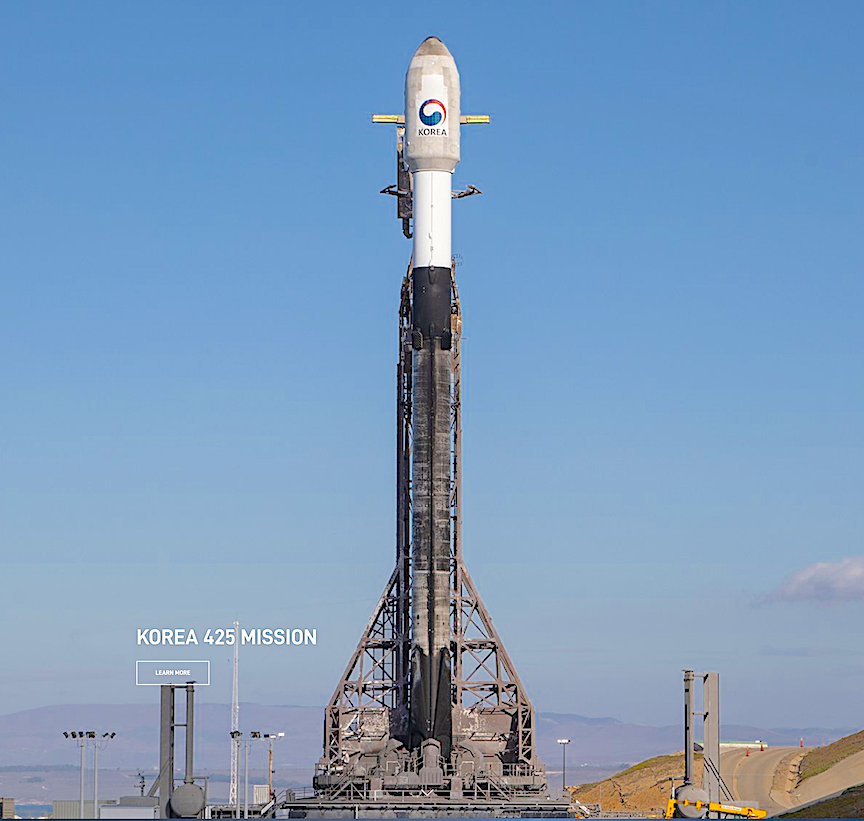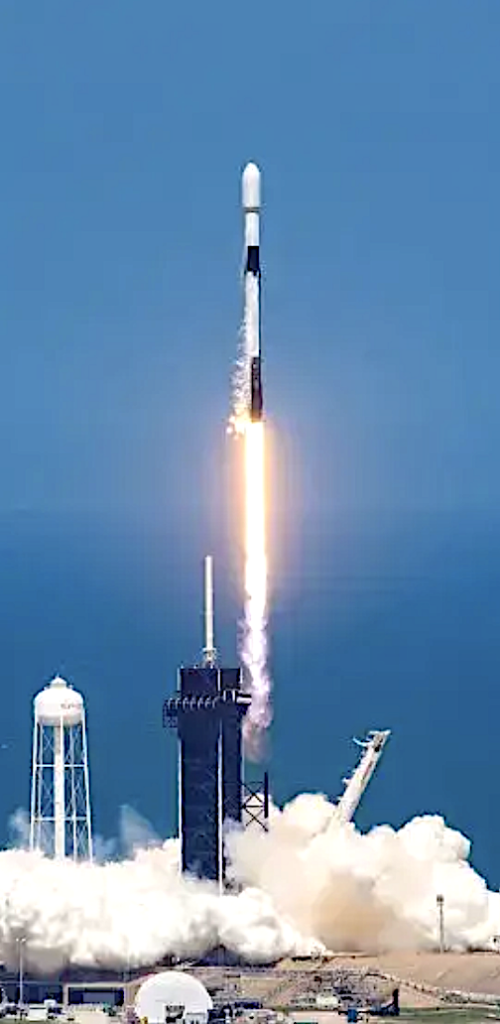
SpaceX is targeting Friday, December 1 at 10:19 a.m. PT for a Falcon 9 launch of the Korea 425 mission to LEO from Space Launch Complex 4 East (SLC-4E) at Vandenberg Space Force Base in California.
The project is lead by the Korean Agency for Defense Development (ADD) and Korea Aerospace Research Institute (KARI), with input from Korea Aerospace Industries (KAI), Hanwha Systems and Thales Alenia Space.
ESA’s EIRSAT-1 is also onboard as a rideshare passenger. This 2U cubesat carries three experiments, including a novel gamma ray detector to study some of the most luminous explosions in the universe.

The forecast calls for a temperature of 52°F, clear skies, 1% cloud cover and a wind speed of 18mph. A live webcast of this mission will begin on X @SpaceX about 15 minutes prior to liftoff. Watch live.
This is the first launch, at the cost of $52 million, of five top secret reconnaissance satellites for the South Korean Defense Acquisition Program Administration (DAPA), with one satellite featuring an electro-optical infrared (EO/IR) telescope. The other four synthetic aperture radar (SAR) satellites are to be launched at a later date. They will be launched to low Earth orbit between 600 and 700 km by 2025, enabling South Korea’s military to observe the nuclear-armed neighbor’s key military facilities every two hours with 30-50 centimeters resolution imagery, according to a 2019 report produced by the Korea Institute of S&T Evaluation and Planning.
There are a total of 25 spacecraft on board this mission, including KOREA’s 425, Space BD’s ISL48, SITAEL’s uHETSat, D-Orbit’s ION SCV Daring Diego, York Space Systems’ Bane, and PlanetIQ’s GNOMES-4.
This is the 17th flight of the first stage booster supporting this mission, which previously launched Crew-1, Crew-2, SXM-8, CRS-23, IXPE, Transporter-4, Transporter-5, Globalstar FM15, ISI EROS C-3, and seven Starlink missions. Following stage separation, the first stage will land on Landing Zone 4 (LZ-4) at Vandenberg Space Force Base.
